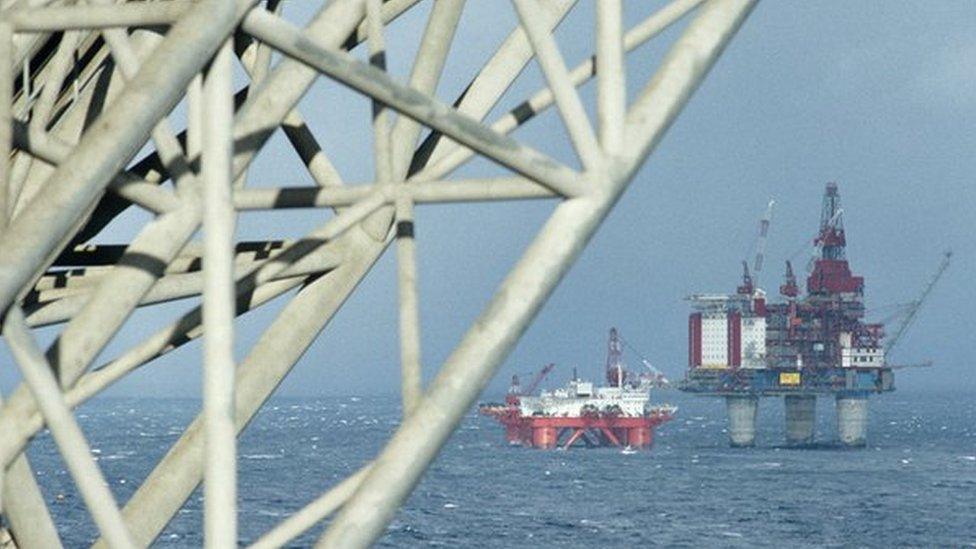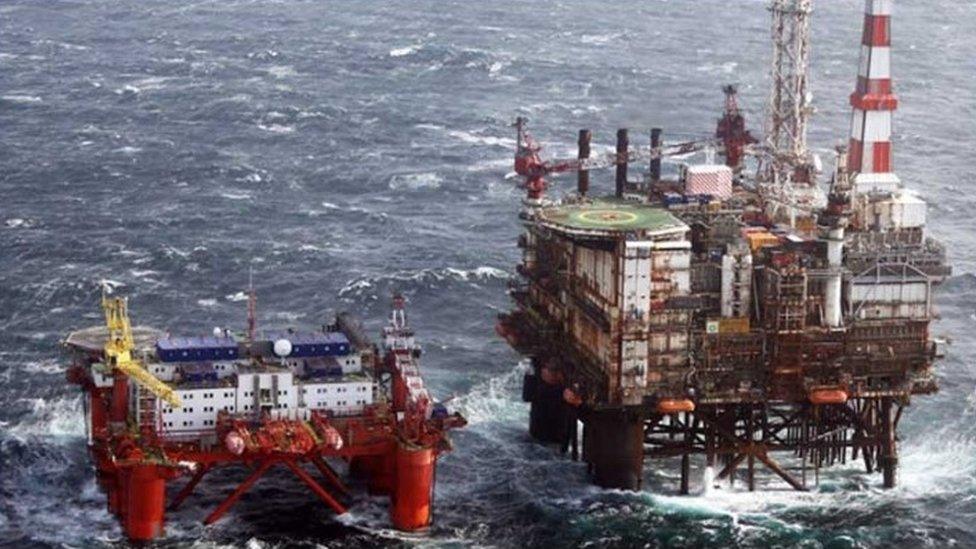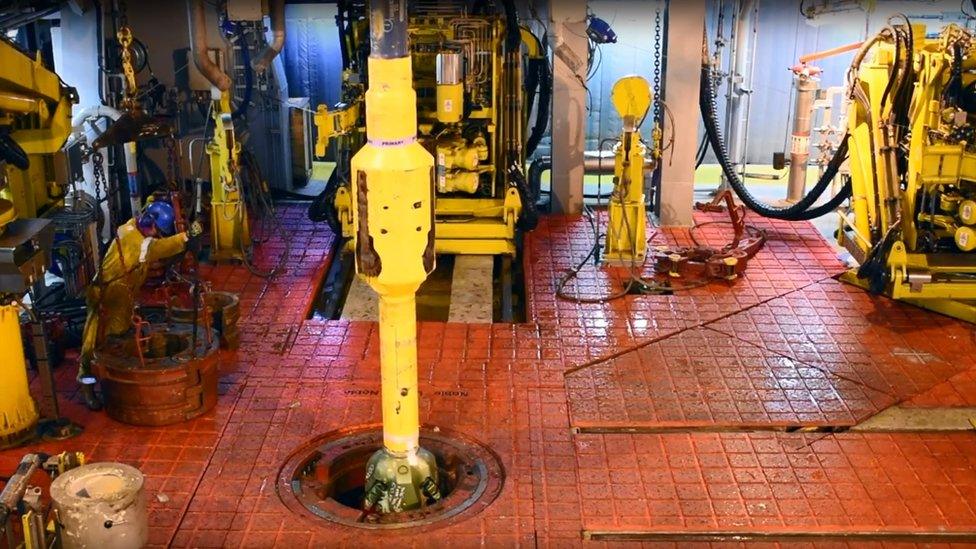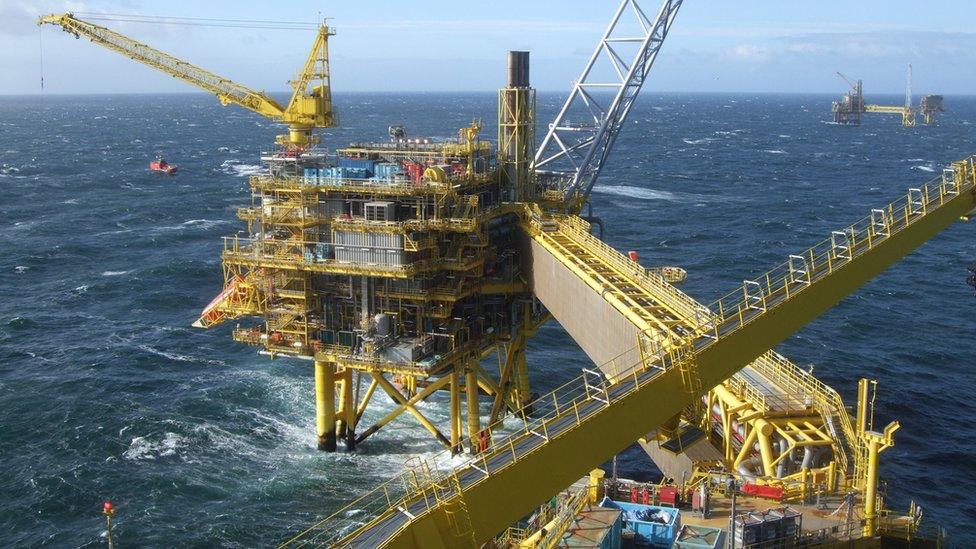Budget 2017: oiling the investment pipeline
- Published

This is the last spring Budget, or so Mr Hammond tells us. So goes the tradition of springing a bunch of surprises on businesses and household budget planners, with less than a month before they're implemented.
It may be a parliamentary tradition, but it's not been a very clever one, at least in the modern era. An autumn Budget makes more sense in allowing more planning time, not least for devolved administrations.
One part of the budget tradition is that different lobby groups have their say in the preceding weeks, telling the chancellor what he should do. It looks a bit late in his planning cycle, so let's assume they've been more privately lobbying through the winter.
An innovation this time is that the oil and gas industry published its Big Ask of the chancellor for the news bulletins on Budget Day Minus One, and later that day got a pre-Budget commitment to what they were asking for.
It seems Oil and Gas UK has Mr Hammond's ear. He's also emphasising that his initiative to set up a working group with industry is in response to Scottish government lobbying.
Sales bounty
This is to address the problem of moving oil and gas fields from the one operator to another, where the seller is typically a big major, and the buyer is a small specialist at getting the last drops out of an ageing field.
At present, the owner is able to write off the huge decommissioning costs against previous investment in the field - for tax purposes, that is.
But the buyer of the field is not able to use those historic investment sums, and therefore the field is much less valuable.

It is deemed to be in the interests of the economy and the industry (except by those who argue hydrocarbons should be kept in the ground) that such transactions take place. Big explorers and producers can take their sales bounty and plough it into big projects elsewhere, while new money comes into the sector, increasingly from private equity.
The case for such investment has been strongly pitched in the latest business report from Oil and Gas UK. It sets out, as it does annually, the vast clout of this sector, and gives some important pointers to where it's going in the next couple of years.
Cutting the fat
There are no surprises in the dominant tale to be told, of an industry still feeling hammered by the downturn in the oil price. In the supply chain, insolvencies are up more than four-fold since 2013. The 120,000 fewer jobs announced more than a year ago has not been updated. Those cuts are slowing up and may stabilise this year, as some sub-sectors begin to expand.
That's with an astonishing shift in the competitiveness of the UK offshore industry. Producing the average barrel of oil has fallen from $29.70 to $15.30.
There are fewer staff, on lower pay, lower equipment rental prices, smarter ways of working, better planning and significant cuts in the amount of downtime for maintenance.
The fall in the average cost of bringing a barrel of oil through the development process to production is down from more than $30 to $9 this year.

The Culzean field is an example. Just by doing the planning better, its budget is down 15%, or $500m.
Is there any other industry that could achieve that? Looked at from the other point of view, is there any other sector that had so much fat to cut?
The Oil and Gas Authority, the new industry regulator, last week reported on just how over-budget and delayed the sector became in the boom years, as the price of scarce equipment and staff ballooned. The average project was 35% over budget.
"Severe pressures"
Here are just some of the other interesting takeaway points buried in the sector's business report:
Production is on the way up to around 1.9 million barrels per day by 2018. After years of sharp falls, it's up 16% on its 2014 level, and will be up around 24% within two years. That follows the bonanza of investment in recent years.

That bonanza is tailing off. Total investment is down from £14bn to £8bn this year, and falling fast, as major projects come to an end and production starts.
Last year saw only two new field development plans approved, with less than £500m of capital spend. The industry body expects between four and six greenfield projects to be sanctioned during this year, worth around £1bn. Next year could see as many as eight projects up for gateway decisions for go-ahead. They have a combined value of £5bn.
A third of capital spending forecast for 2018 is yet to be sanctioned, and a third of the activity forecast for 2019. So getting to those green lights really matters.
It's in response to that that the Oil and Gas UK report states bluntly: "If these projects do not materialise in a timely fashion, parts of the UK supply chain will come under severe pressure and capabilities may be irretrievably lost… The UK will face another significant production decline in the early part of the next decade if new capital cannot be secured this year, causing all areas of the business to suffer in the longer term."
Western frontier
Fourteen fields ceased production last year, and as many are expected to do so this year. The drive to replace fields as they deplete is even more starkly presented by the industry estimates of how dependent the UK sector has become on new fields.
We've had the recent start-up of Cygnus, Laggan-Tormore, Solan and Golden Eagle, with production still ramping up.
Next come Schiehallion, Clair Ridge, Kraken, Western Isles, Catcher and Mariner.
Together, those ten fields are expected to contribute nearly a third of total production by next year, with a fifth coming from the west of Shetland frontier.
It's with numbers like that that it's possible to get the Chancellor's attention and get a very rare pre-Budget Budget announcement.
- Published8 March 2017
